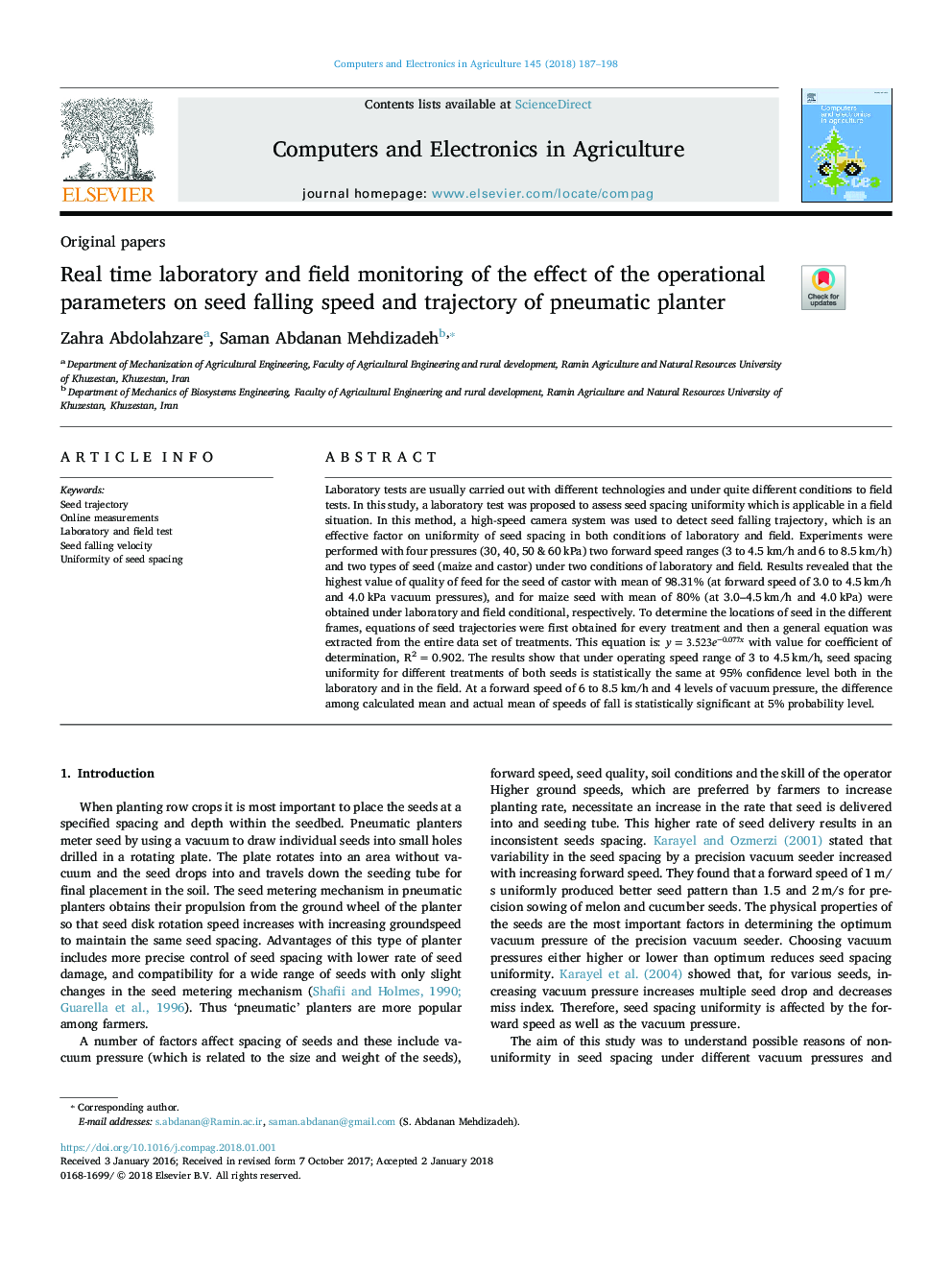| Article ID | Journal | Published Year | Pages | File Type |
|---|---|---|---|---|
| 6539762 | Computers and Electronics in Agriculture | 2018 | 12 Pages |
Abstract
Laboratory tests are usually carried out with different technologies and under quite different conditions to field tests. In this study, a laboratory test was proposed to assess seed spacing uniformity which is applicable in a field situation. In this method, a high-speed camera system was used to detect seed falling trajectory, which is an effective factor on uniformity of seed spacing in both conditions of laboratory and field. Experiments were performed with four pressures (30, 40, 50 & 60â¯kPa) two forward speed ranges (3 to 4.5â¯km/h and 6 to 8.5â¯km/h) and two types of seed (maize and castor) under two conditions of laboratory and field. Results revealed that the highest value of quality of feed for the seed of castor with mean of 98.31% (at forward speed of 3.0 to 4.5â¯km/h and 4.0â¯kPa vacuum pressures), and for maize seed with mean of 80% (at 3.0-4.5â¯km/h and 4.0â¯kPa) were obtained under laboratory and field conditional, respectively. To determine the locations of seed in the different frames, equations of seed trajectories were first obtained for every treatment and then a general equation was extracted from the entire data set of treatments. This equation is: y=3.523e-0.077x with value for coefficient of determination, R2â¯=â¯0.902. The results show that under operating speed range of 3 to 4.5â¯km/h, seed spacing uniformity for different treatments of both seeds is statistically the same at 95% confidence level both in the laboratory and in the field. At a forward speed of 6 to 8.5â¯km/h and 4 levels of vacuum pressure, the difference among calculated mean and actual mean of speeds of fall is statistically significant at 5% probability level.
Keywords
Related Topics
Physical Sciences and Engineering
Computer Science
Computer Science Applications
Authors
Zahra Abdolahzare, Saman Abdanan Mehdizadeh,
